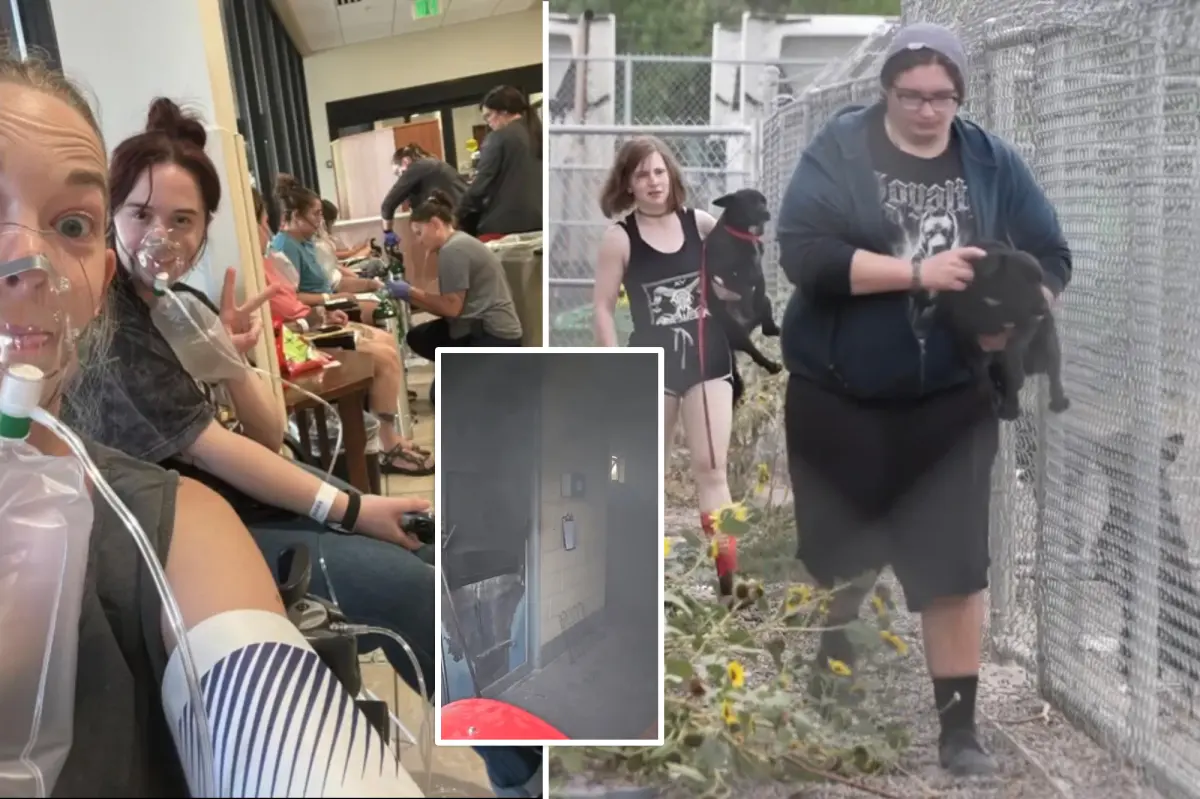By Katherine Ellis
Copyright breezyscroll

What Happened at the Yellowstone Valley Animal Shelter?
A routine FBI drug disposal in Billings, Montana, turned into a public safety scare when smoke from a narcotics burn filled the Yellowstone Valley Animal Shelter (YVAS). Fourteen employees were hospitalized, and about 75 cats and dogs had to be evacuated after the facility’s incinerator was used to destroy two pounds of methamphetamine.
Animal control officers typically use the incinerator to dispose of euthanized animals. According to local officials, law enforcement can also use the equipment for seized narcotics. But this time, negative air pressure pushed toxic smoke into the shelter rather than out of it—exposing both humans and animals.
How Did the Incident Affect Shelter Staff and Animals?
Shelter staff acted quickly, donning masks and moving dozens of animals to safety. Even so, several employees were exposed for more than an hour before evacuation.
Human impact: All 14 staff members were treated for smoke inhalation at a local hospital, where they spent about three hours in a hyperbaric oxygen chamber.
Animal impact: The shelter’s dogs and cats were relocated to temporary facilities. Four litters of kittens—confined in a smoke-filled room—remain under veterinary observation.
Executive director Triniti Halverson said she did not know that the FBI was conducting a drug burn onsite. In a public statement, she called the exposure “heartbreaking” and confirmed both her team and the animals were exposed to methamphetamine fumes.
Why Was the Shelter’s Incinerator Used for Drugs?
The FBI often uses outside facilities for controlled evidence burns. A spokesperson told that the practice is standard. In this case, the Yellowstone Valley Animal Shelter’s incinerator was deemed suitable.
But the setup raises safety questions:
Not designed for narcotics: While appropriate for animal remains, such incinerators may not be equipped with advanced air filtration required for hazardous drug disposal.
Lack of communication: Halverson says she was not informed ahead of time, leaving staff and animals unprepared.
Airflow failure: Assistant City Administrator Kevin Iffland explained the smoke intrusion was caused by negative pressure—essentially a ventilation failure.
What Happens Next?
A professional team is now decontaminating the shelter, a process expected to take two to four weeks. In the meantime, YVAS staff and volunteers are displaced, and the animals are scattered across temporary homes and partner shelters.
Halverson has appealed for donations, citing urgent needs for food, blankets, and other essentials. “For many of us—staff, volunteers, and fosters—YVAS is our safe space,” she said. “We are displaced, lost, and homeless.”
Why Does This Matter?
This incident highlights gaps in communication between federal agencies and local organizations, especially when dangerous substances are involved. It also underscores the risks of using non-specialized facilities for narcotics disposal.
Public health risk: Inhaling meth smoke is hazardous even in small amounts.
Animal welfare: Many of the shelter’s animals were already vulnerable before exposure.
Trust and transparency: The shelter’s leadership has expressed frustration over not being notified, a factor that could erode trust between community partners and law enforcement.
Could It Have Been Prevented?
Experts say yes—through better planning and equipment.
Dedicated facilities: Using only certified, high-temperature incinerators for narcotics would reduce risk.
Advance notice: Informing shelter leadership could have ensured staff and animals were off-site during disposal.
Stronger oversight: Federal and local agencies may need clearer protocols to prevent similar incidents.
The Bigger Picture
This event may seem like a local mishap, but it raises broader questions about how law enforcement disposes of seized drugs nationwide. With methamphetamine seizures rising in the U.S., the demand for safe and effective destruction methods is growing. Using ad hoc facilities—especially those housing live animals—poses obvious dangers.
Going forward, watchdog groups and animal welfare advocates may push for stricter rules around controlled substance disposal, ensuring tragedies like this don’t repeat.
Fourteen shelter workers in Billings, Montana, were hospitalized after the FBI burned meth in the Yellowstone Valley Animal Shelter’s incinerator, filling the building with toxic smoke. Seventy-five animals were evacuated, some requiring ongoing care. The shelter’s director says she was never told about the drug burn. The building will remain closed for weeks as cleanup continues, and the shelter is appealing for public donations.



